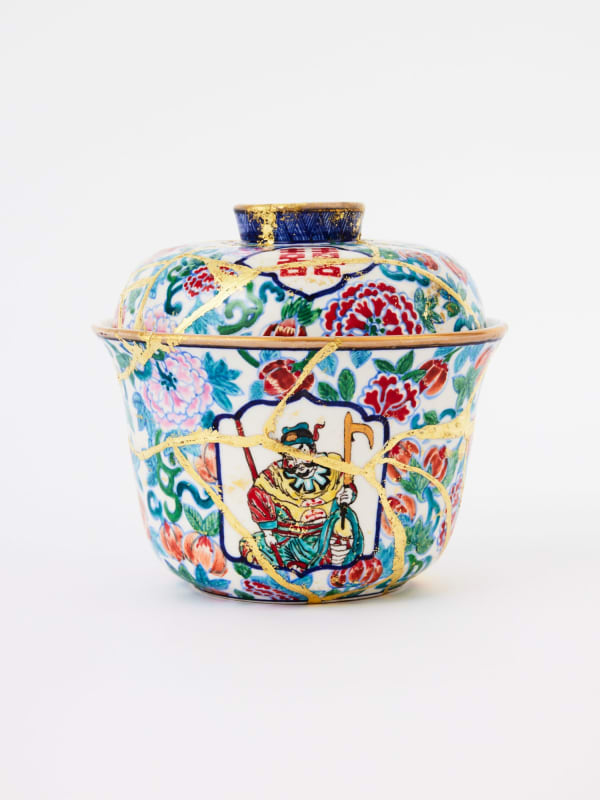-

-

-
'The idea of a 3 dimensional canvas to paint on was really appealing to me ... the nature of the medium also meant they were enduring as art objects and functional items.'
-

-
-

-

-
-
108 Stars and Spirits.
As a non-archaeologist person (me, maybe you too) I am astounded at the amount of time and effort historian, archaeologist types spend on the study of broken ceramic pieces recovered from a time before them. Analysing individual shards down to their molecular level, filling out page after page with the measurements of minutia that appear to most people as the ultimate bore. But what us outsiders don't realise is that archaeologists discovered long ago that these details collected on each piece of fired clay act as a window into the lives of those who made and used these vessels. What did they eat for breakfast? How many people lived in their house? How did they organise their lives? Who are they! In many societies, past and present, ceramic and porcelain vessels are a regular, and often invisible part of everyday life. However, as Ursula K. Le Guin aptly deduced, the vessel is humanity's greatest invention, before the tool that forces energy outward, we made the tool that forces energy inwards. The vessel resembles us and our lives perfectly; the jar, the net made of hair, the home, the body: containers to contain us.
For Casey Chen, the vessel represents all things enduring: history, family, customs–recontextualising traditional Chinese ceramics with motifs from both traditional Chinese folklore and nostalgic pop-culture; his ceramics, like any piece of material culture, is woven into the complex tapestry of his life–the minutiae of every vessel acting as a key to unlocking who Casey Chen is and why he makes what he makes. Beginning with the outside, the glaze, that glassy coating that encases the vessel, traditional Chinese painting techniques–wucai and doucai onglaze– paint the oldest recorded narrative in Mandarin, Water Margin alongside some iconic figures from the childhood cartoons Chen watched: Bugs Bunny, Doraemon and Willie the Giant. Encouraging a sideways conversation between histories and cultures, incorporating tradition with a contemporaneous flair, Chen is embracing the fictional kinship of the characters and Heroes from both worlds, East and West, and monumentalising them in the ultimate act of fandom.
Some of the forms these works take: baluster mallet vase, lidded potiche and meiping (plum vase) highlight the way we privilege the utilitarian at the expense of the non-utilitarian, symbolic or cultural performance ceramic vessels can host. I found myself asking, “is that a vase?’ instead of admiring the deftly painted, expertly rendered form. What I like about Chen’s work is not only how we can see the hand unearthing memories from the mind, but how we can see the whole body too. The height of the vessel profiles the length of the arm; the polygonal body with rounded shoulders and tapered neck mimicking the posture of Chen at work; the lusty gold Kintsugi lines tying the sometsuke (Japanese) and wucai (Chinese) influences in visceral teamwork. Each vessel is an intimate portrait of a life to date–what has influenced it, nourished it, raised it.
Ceramic vessels are made frequently, broken often, have excellent preservation, and can be made into endless varieties to suit various needs. Getting close to Chen’s work, one stood out: golden lines fusing shards together, it broke in my bag, Chen quipped. Aptly titled ‘Borrowing a Page from History’, each shard admitting an intimate detail about Chen, this vessel is a tool, a symbol and a sign–pulling from Chen's past and simultaneously preserving his future. Chen’s work comfortably exists at the intersection of tradition and contemporary, of form and function, of the now and then. And it's because of this, that Chen’s work feels like a reminder that, like vessels, we’re all just upright containers and arenas for our lives. -










